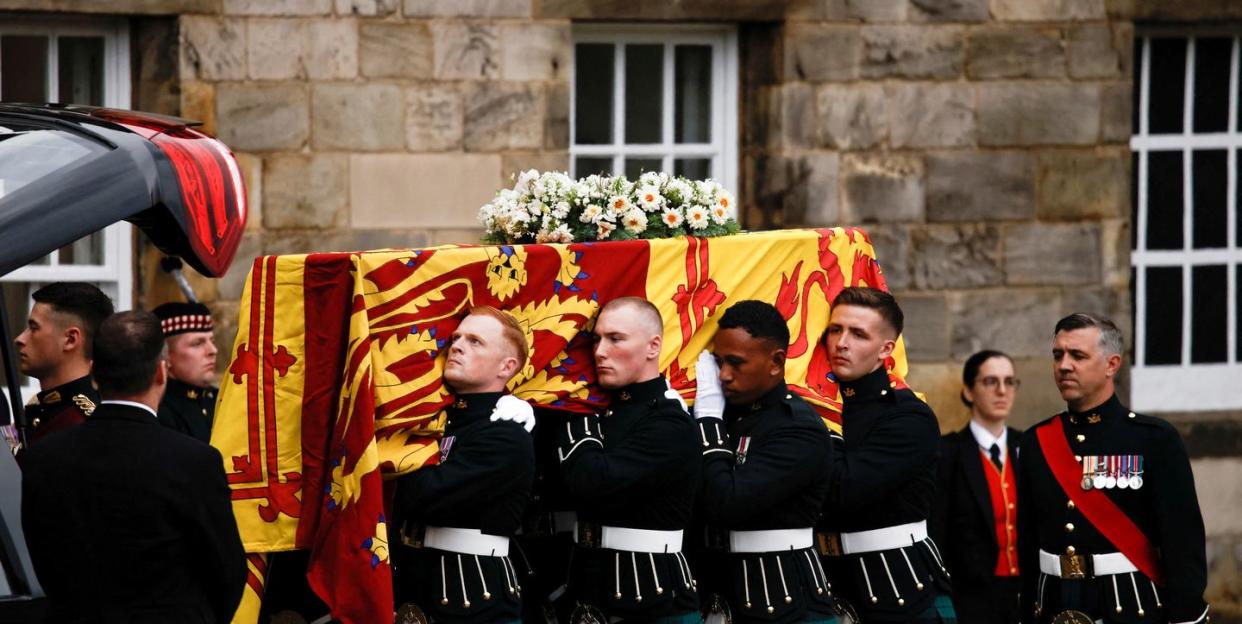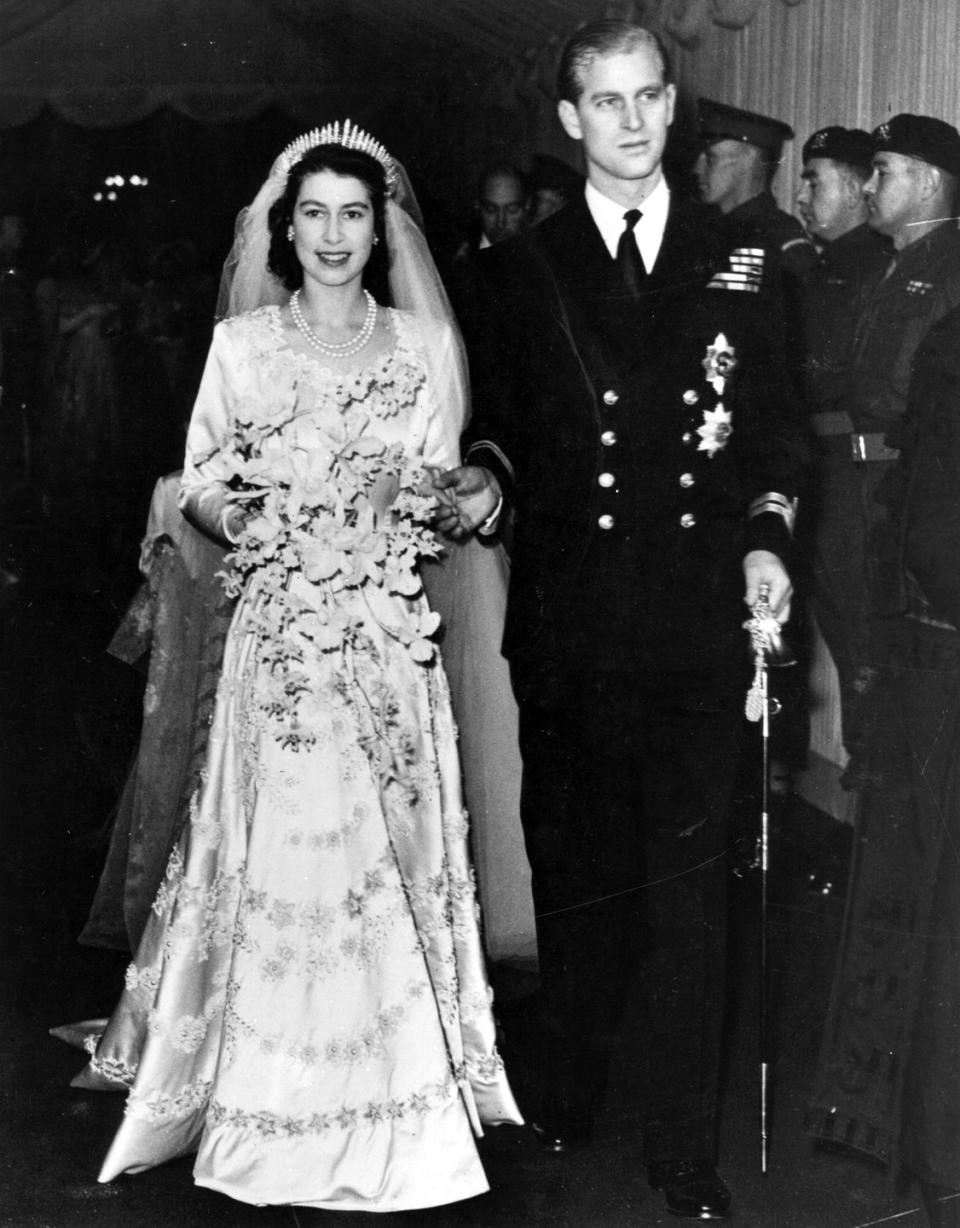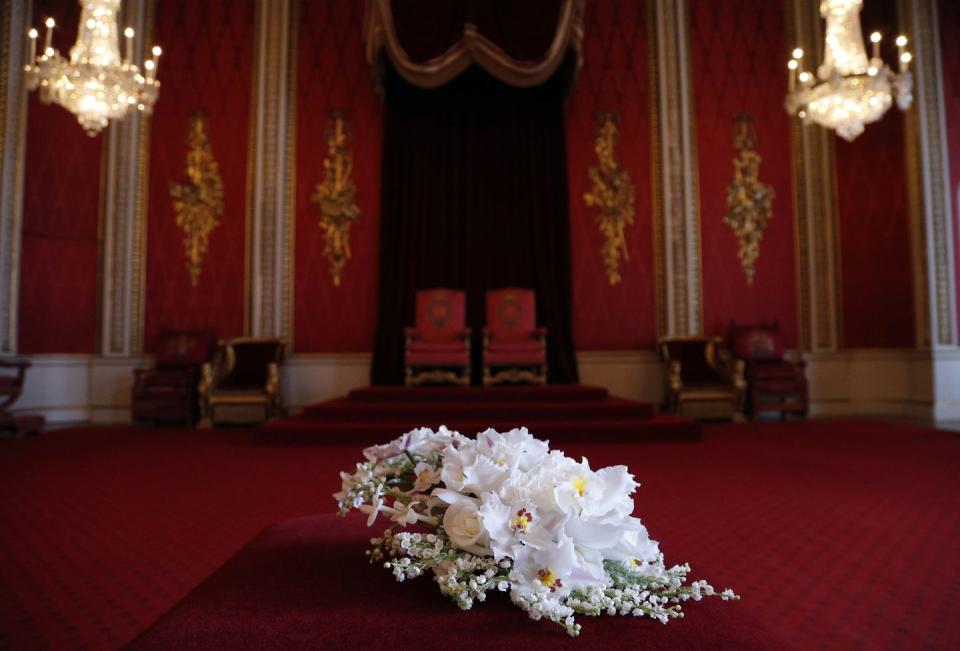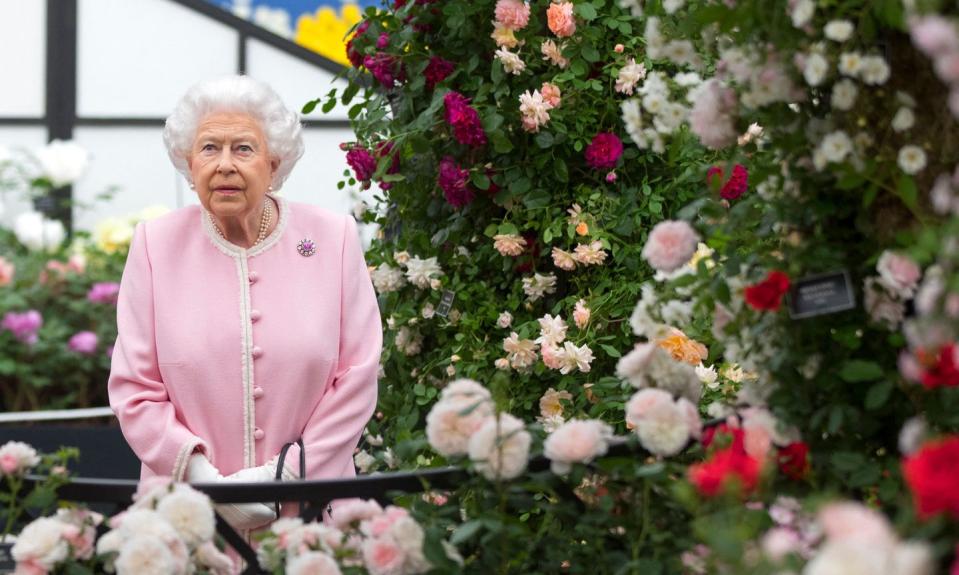The Secret Meaning Behind the Queen’s Funeral Flowers

- Oops!Something went wrong.Please try again later.
"Hearst Magazines and Yahoo may earn commission or revenue on some items through the links below."
As Queen Elizabeth II’s casket made its way September 12 along the Royal Mile in Edinburgh, past thousands of mourners on its way to London for her funeral, one image remains that will likely survive the passage of time: a single traditional floral wreath filled with seasonal blooms atop the casket. Despite the circlet’s simplicity, which added quiet beauty to this historic moment, there’s more than meets the eye. Here’s the poignant meaning behind Her Majesty’s tributary botanics.
What flowers were placed on the Queen’s casket?
The oak coffin was draped with the Royal Standard of Scotland and a circular wreath of white flowers made up of sweet peas, dahlias, phlox, white heather, and pine fir, the royal family revealed. The Daily Mail reported that the wreath also contained spray roses, freesias, button chrysanthemums, dried heather, spray eryngium, foliage, rosemary, hebe, and pittosporum—all white or green.
What’s the history behind the wreath?
The wreath’s blooms, plucked from the Queen’s beloved Balmoral garden, bore a striking resemblance to the white wreath that Queen Elizabeth II selected to sit upon the coffin of her husband, the Duke of Edinburgh, in 2021. His wreath featured white lilies, roses, freesia, wax flower, jasmine, and sweet peas—which the monarch endearingly picked out herself for his wreath, according to Hello! Magazine.

What significance do the flowers have?
Three of the flowers that were placed on both the Queen’s and Prince Philip’s coffins have particular significance. Sweet peas are the birth flower of April, the Queen’s real birthday. In the language of flowers, sweet peas signify departure and goodbyes. White roses are associated with loyalty. And freesias are symbolic of friendship and perseverance, a touching nod to their long-lasting marriage.
What was Queen Elizabeth’s favorite flower?
Not yet seen in the queen’s funeral wreaths, lily of the valley held pride of place in the Queen’s botanical affections. Elegant yet hardy, it is a woodland flowering plant with dark green leaves and white bell-shaped flowers that are known for their sweet smell. It is famed for being relatively easy to grow. Lily of the valley symbolizes motherhood, purity, and good luck—but the sentimentality goes beyond textbook definitions for the Queen. She carried them in her bouquet of orchids when she married the Duke of Edinburgh in 1947, and they were featured six years later in her coronation bouquet. When her husband died in April 2021, the flowers were again used to decorate the church in reference to their bridal bouquet. In addition to being a staple flower for key royal events (and a fixture in Kate Middleton’s wedding bouquet), lily of the valley is also a permanent feature of the floral displays at Buckingham Palace. It would be fitting, then, that the white bloom is a key part of the Queen’s final farewell ceremony in London.


Is there a rose named after the Queen?
Other potential floral flourishes that could make their appearance in the upcoming funeral are the Queen’s own namesake blooms (there’s more than one). The royal family has a long history of lending their names to specific botanicals—and the Queen, a lover of all things horticulturally minded, is no exception. The Dendrobium “Queen Elizabeth II,” is a tropical orchid that was named after the Queen during her 1972 tour to Asia. The evergreen plant produces long arching flower stems that carry up to 20 long-lasting yellow flowers. The Camellia japonica “Her Majesty Queen Elizabeth II” is a peony-type rose with salmon pink flowers that blossoms for just two weeks in the spring. With showy blooms that can grow to 12 centimeters, these glossy evergreens hailed from the United States in 1953. Introduced just this year are the Rosa Queen Elizabeth, a sweetly scented pink hybrid tea rose that was introduced by Harkness Roses to commemorate the Queen’s Platinum Jubilee, and the Elizabeth (Ausmajesty), a tall silver-pink rose bred by the Royal Horticultural Society in honor of what would have been Prince Philip’s 100th birthday. Our favorite detail? The namesake bloom has a strong, sweet fragrance with hints of lemon sherbet and Old Rose.

You Might Also Like

